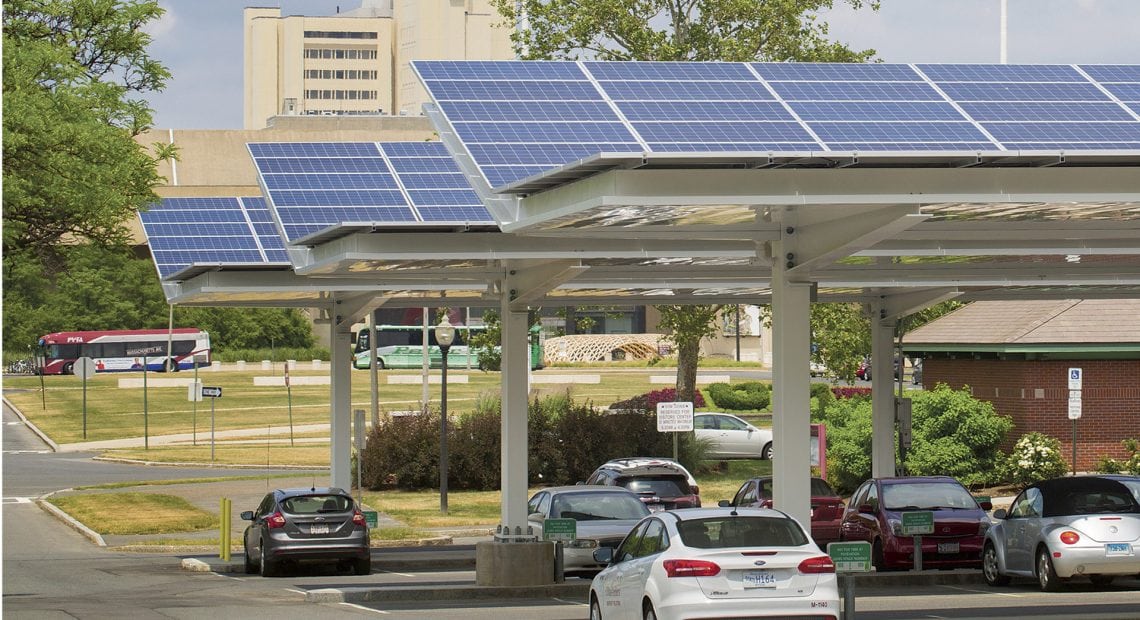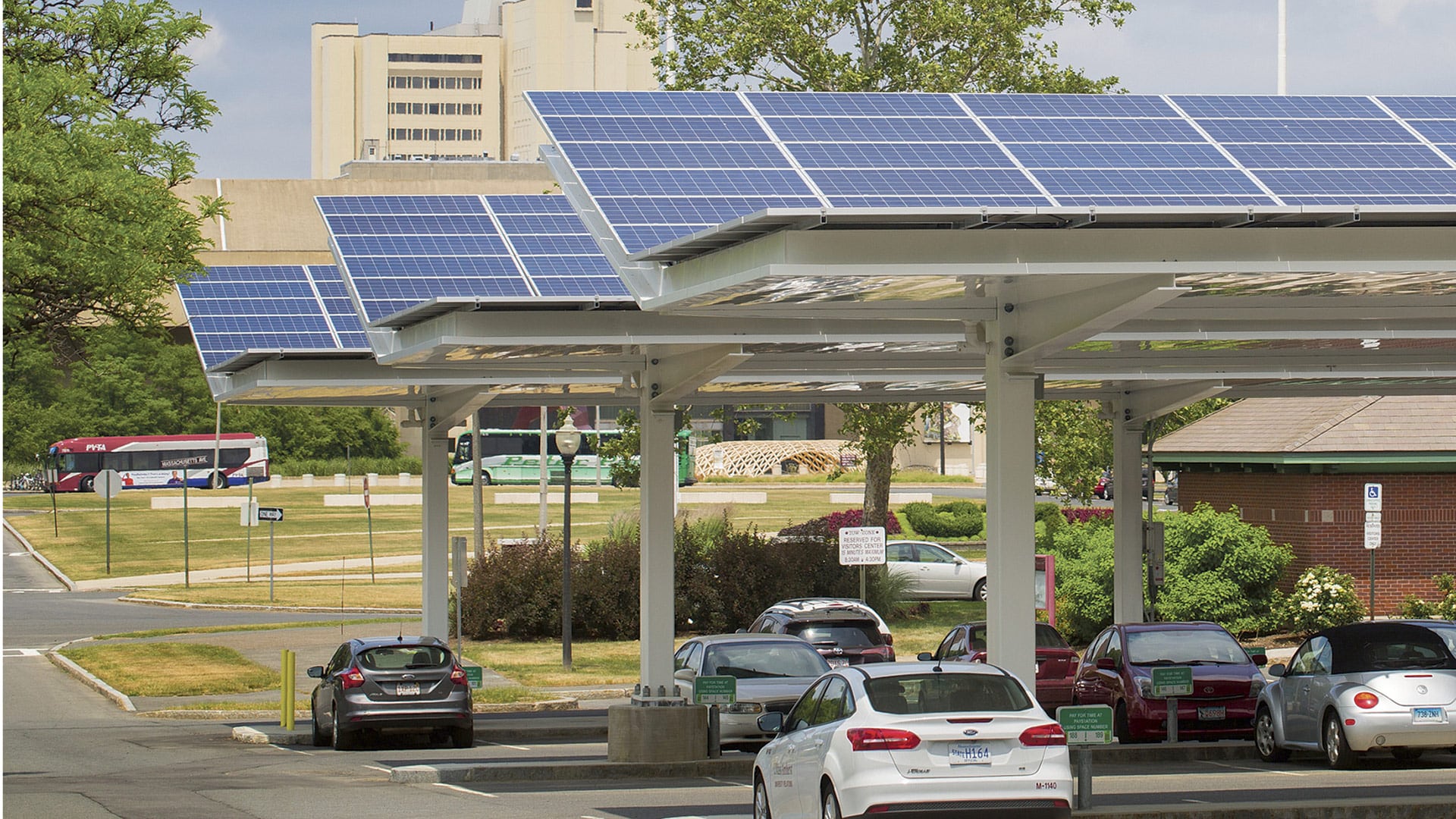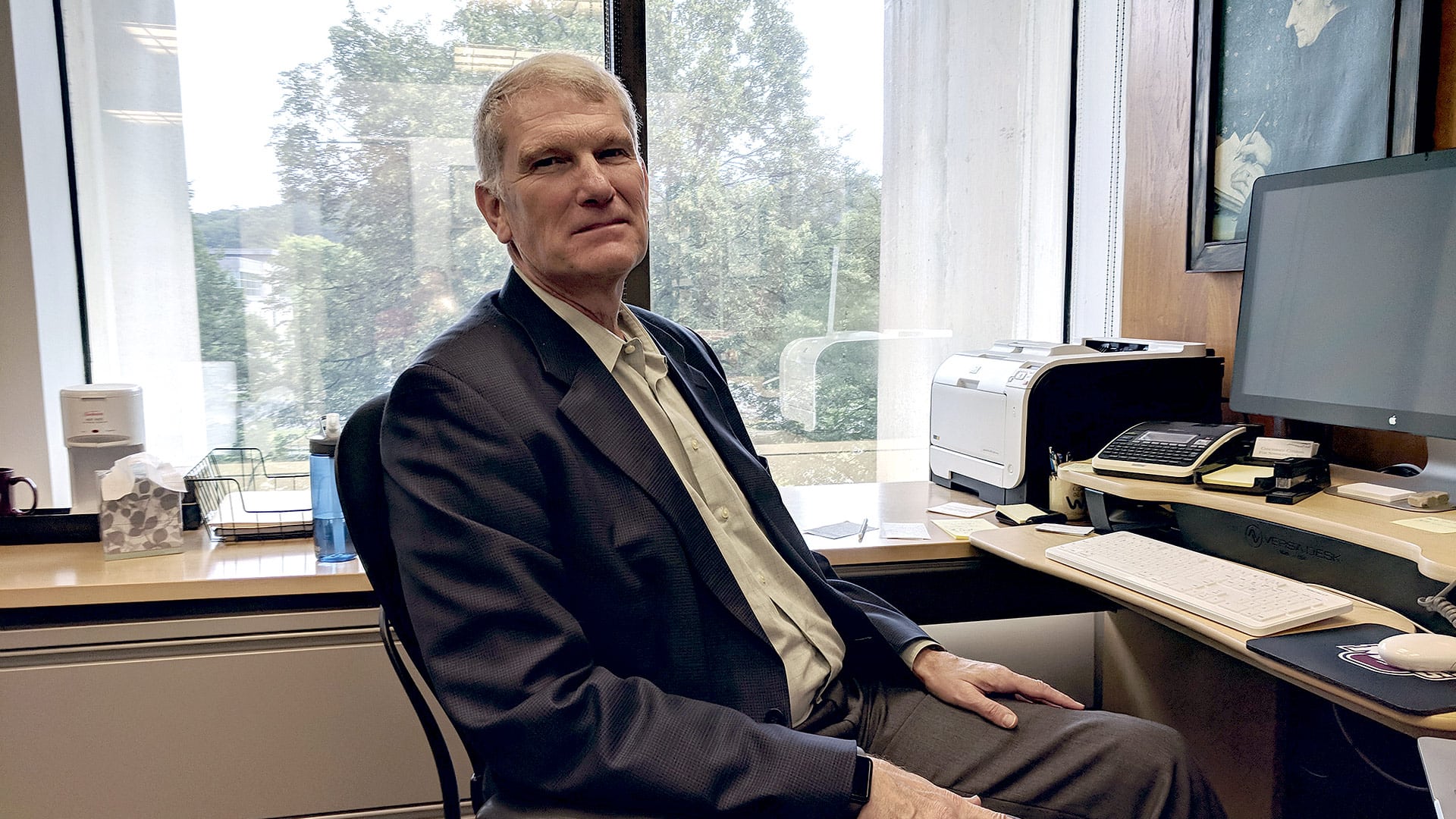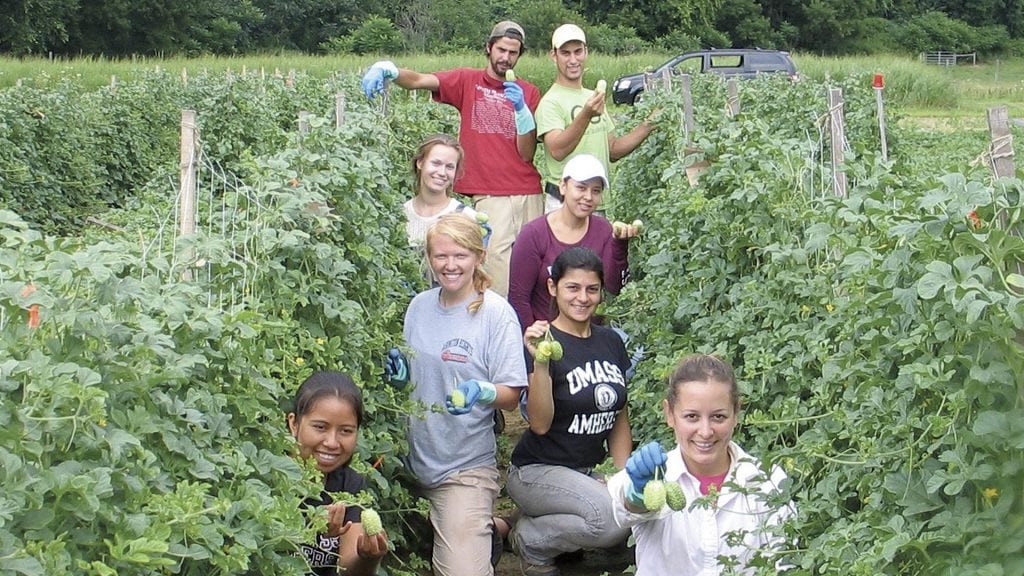Living with the Land
Environmentally friendly ideas are nothing new in the architecture and design world, but advances have come at a rapid pace — not just in how green a project can be, but how effectively the long-term cost savings justify the upfront expense. Clients want to do the right thing, design professionals say, but they’re much more willing if they can see an economic justification. Increasingly, they’re able to achieve both goals.
Sometimes design decisions bring unexpected benefits, Rachel Loeffler says.
Take a project her firm, Berkshire Design Group, designed for East Meadow School in Granby.
“Cost was a big factor, so we looked at using a meadow feed mix instead of traditional bluegrass, which saves the school 100 gallons of gasoline in mowing, as well as the labor,” said Loeffler, a principal and landscape architect with the firm.
“But then, what happened was, some birds moved in almost instantly, including some orioles.”
Orioles, by the way, are among the hundreds of bird species most at risk from climate change and destruction of meadow lands due to development, so creating a healthy habitat for them is significant, she said. “Sometimes, delightful surprises happen.”
When Northampton-based Berkshire Design Group, one of the region’s leading firms in the realm of sustainable design, opened its doors in 1984, its founders might have been equally surprised to see how common green ideas would become a few decades later.
“Back then, we were experimenting with stormwater standards, alternatives that then became state standards,” Loeffler said. “That creative approach is something that was part of us from the beginning.”
C&H Architects, headquartered in Amherst, can track a similar trajectory, emphasizing green and sustainable architecture since its launch in 1989.
“Nobody was trying to do that 30 years ago — it wasn’t even part of the lexicon,” said Thomas Hartman, partner and principal architect. “Over the years, it’s really been interesting to see how what might have been an odd-duck type of client become the norm.”
In those early years, he said, forward-thinking clients would seek out C&H specifically for this expertise, while today, green design isn’t surprising at all. “It’s gone from the occasional project to where, if this isn’t part of the conversation, you’re not really practicing in the mainstream anymore.”
In fact, he noted, the American Institute of Architects (AIA) has basically shifted its organizational philosophy to suggest that, if a project isn’t environmentally conscious, if it’s not sustainable, then it’s just not good design.
“Climate change requires a holistic approach, addressing the interdependencies among people, buildings, infrastructure, and the environment,” AIA President William Bates said recently. “Our training allows us to look for solutions and ways to mitigate climate change comprehensively and creatively, which we do every day.”
At their most basic level, Hartman explained, buildings protect individuals from the elements and provide texture to people’s lives. Buildings, however, are also one of the largest contributors to global warming, accounting for nearly 40% of all greenhouse-gas emissions worldwide — a statistic expected to double by 2050. In an effort to mitigate these impacts, there has been a steady increase in sustainable architecture — the design of buildings that work in harmony with the environment.
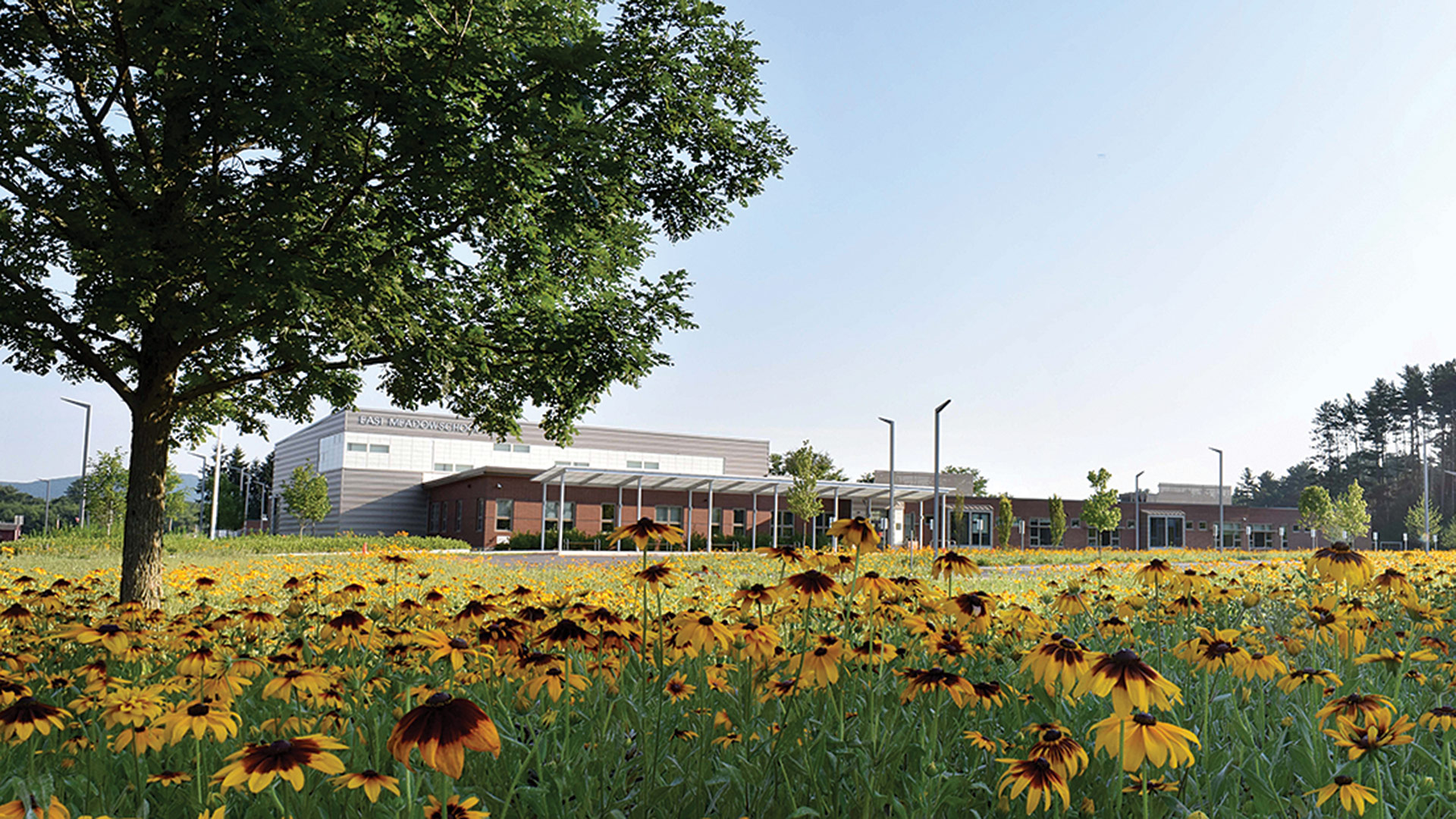
Installing a meadow instead of grass at East Meadow School in Granby reduces gasoline use and provides a habitat for endangered birds.
C&H Architects has been at the forefront of this effort for three decades. For example, it designed the fifth-ever certified Living Building Challenge project in the world (and the first in New England) for Smith College’s MacLeish Field Station, the most rigorous performance standard for buildings available.
“It’s the most difficult standard — net-zero water, net-zero energy, avoiding certain materials and chemicals,” he said, noting that net zero means producing as much of that resource as one takes from the environment.
The firm has followed similar standards with other commercial and academic projects, and has designed more than 10 homes that boast net-zero energy, the most recent of which won the top honor at AIA Rhode Island in 2018, and includes a solar array that powers both the house and the car of its occupants.
That’s an especially cutting-edge standard, Hartman said, but it may become mainstream as well in the coming years, just as many sustainable practices in building and landscape design have become the norm, not the exception.
Holistic Approach
Loeffler said there are two ways to craft a sustainable philosophy for a project. One is to simply create a checklist of energy-saving or environmentally conscious features.
The other way of thinking actually takes cues from ecological thinking and the way all organisms are interrelated. On the simplest level, she cited the example of humans and trees — plants give off oxygen, while we breathe it in and give off carbon dioxide.
“There’s an understanding that each entity has a need for resources to consume, and has a waste product,” she said. “What sustainable thinking allows us to do is look at a project and look at ways to tie resources and waste together in a project or adjacent use somewhere else.”

Tom Hartman takes meter readings at a mill renovation in Lawrence — part of his goal to make sure energy-saving projects are performing as they are designed to.
One example is a dog park she recently worked on, during which time she approached a company that specializes in taking dog waste and turning it into energy. “Farms are taking waste from grocery stores, and any sort of organic waste products, and generating electricity. These are waste products that are being taken out of the waste stream instead of being shifted to a landfill somewhere.”
Hartman said architects, including those at his firm, are also starting to think about reductions in embodied carbon, which are the emissions associated with building construction, including extracting, transporting, and manufacturing materials.
“What that means is that we’ll be making low-carbon buildings, so we’re not adding to the carbon issue,” he said, adding quickly that this, like all new initiatives, comes with a learning curve. “In the evolution of our practice over 30 years, as soon as we get competent in one thing, we’re going to the next thing.”
Clients in the education sector have been particularly receptive to innovative ideas around sustainability, he noted, but those projects often come with time barriers.
“When you’re doing academic work, doing renovations on an existing building, they’re occupied, so you may have just a couple of weeks to do your job and have a limited budget, so how do you address environmental design and sustainable design on these types of projects?” he asked. “It comes down to the materials you’re choosing and what opportunities are available. For example, if you’re renovating a dormitory, you may only have 12 weeks, so you probably won’t renovate the exterior envelope of the building.”
“Nobody was trying to do that 30 years ago — it wasn’t even part of the lexicon. Over the years, it’s really been interesting to see how what might have been an odd-duck type of client become the norm.”
But all projects must consider their long-term impact on users, said Leon Drachmann, a principal at Payette Associates in Boston, who recently talked about sustainability on the U.S. Green Building Council website.
“The green-building initiative will have a deeper impact by expanding its scope — by shifting its focus to areas outside of building design, such as real-estate economics, zoning regulations and land use, while concentrating on the human experience and societal well-being,” he noted, adding that “sustainability should be considered not as an independent, separate process, but as an integral part of design itself.”
Dollars and Sense
One impact that can never be overlooked is the financial one, Hartman said. After all, while clients want to do the right thing, they’re still focused on the bottom line.
“I’ve never met a client where, if we could provide the economic case for doing good in sustainable design, they wouldn’t do it,” he told BusinessWest. “It’s rarer to find a client who will do the feel-good of sustainable design if it doesn’t pass the economic test.”
So part of his service to clients is actually visiting the site after completion, monitoring elements like energy use, waste production, and the overall costs to make sure the promised efficiencies have come to fruition.
“It has been really important for us to do that,” he said. “Most of the time, we want to maintain a relationship with the client in the future anyway. We will ask for energy bills. We’ve never met a client who doesn’t want us to follow up. That’s probably the most important thing for the profession — to make sure it all works, and if it doesn’t work, figure out why. Otherwise, you’re just waving your arms.”
Loeffler noted that clients that have a long-term vision are much easier to convince of the benefits of green design.
“If an organization’s economic-benefit analysis focuses on a one-year plan, they’re going to make a decision based on that — and there’s certainly nothing wrong with that,” she said. “But if their vision centers around a 20- or 50-year plan, they might be inclined to make different decisions.
“In a homeowner’s situation, with solar panels, there are upfront costs in that initial year. Over a certain amount of time, you’ll recoup those costs, but if you’re only looking at one year, you’re not going to budget for solar panels. If you’re looking at the long term, the cost makes more sense.”
The tipping point for much sustainable design and technology will come when those costs approach those of traditional methods across the board — and many in the industry say those days are getting closer. “When green materials become cheaper to acquire than previous materials, we project there will be a huge increase in the desire for this type of technology,” Loeffler said.
Until then, “we try not to push the issue too hard. We engage every client in the discussion, but they have different comfort levels. At the end of the day, we’re there to meet their needs and goals, and we work with them.”
Hartman is happy he works in a state which saw the value of renewable-energy credits and green standards well before most other states did.
“Massachusetts has been progressive, and they did those things so we wouldn’t be so reliant on fossil fuels from other countries,” he said. “It’s really exciting nowadays.”
Joseph Bednar can be reached at [email protected]



